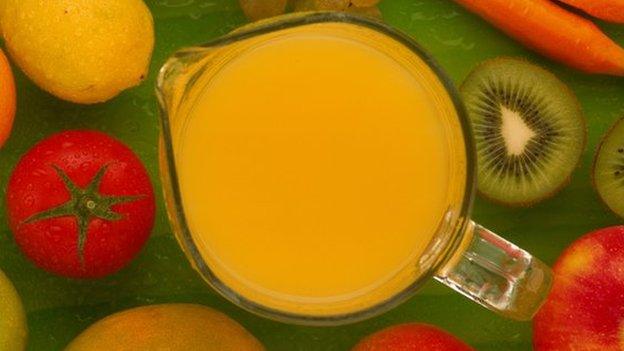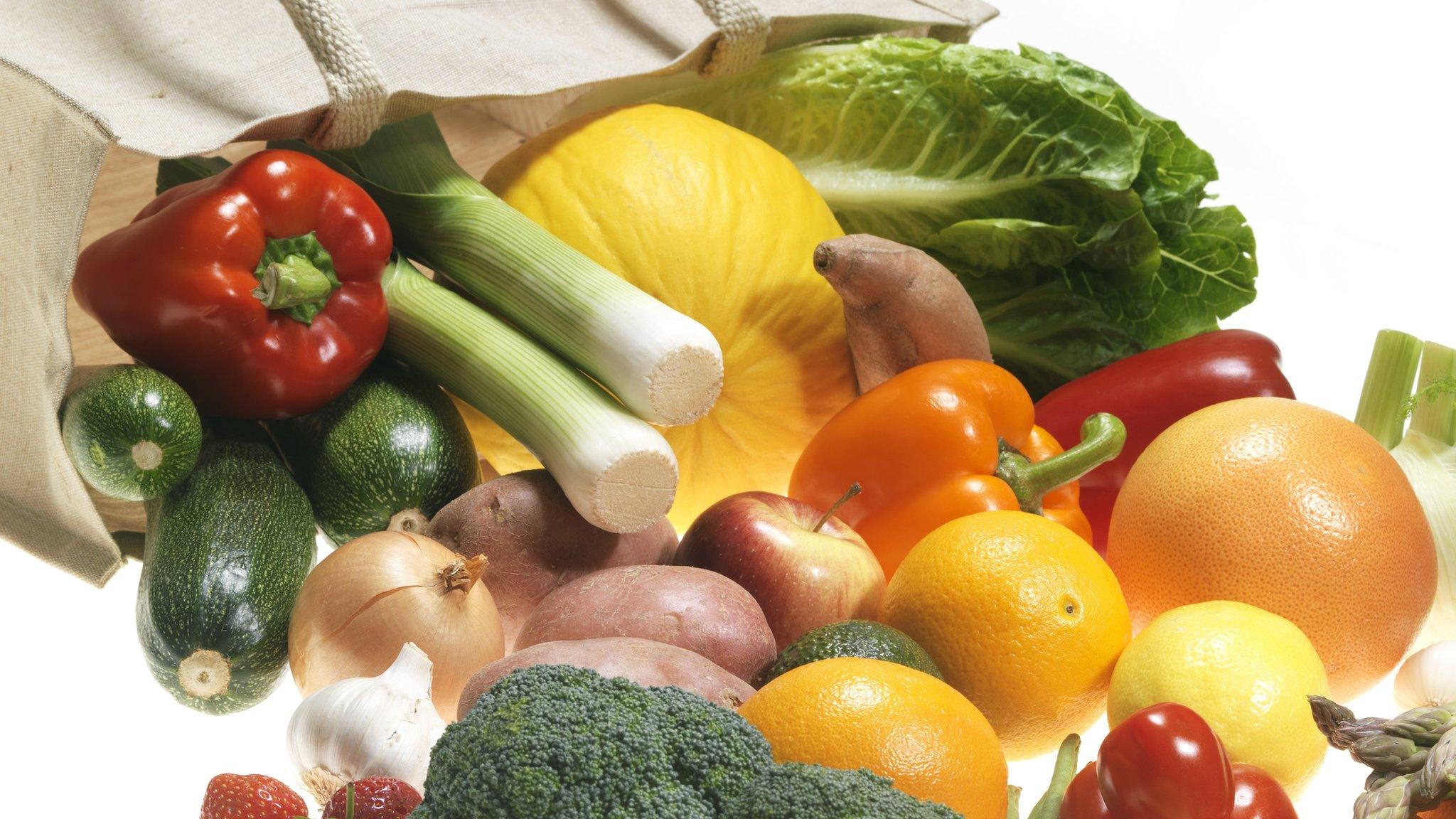Ready meals may count towards five a day
- Published

The government is considering adding its "five-a-day" logo to ready meals and tinned foods that contain fruit and vegetables.
Public Health England said it was discussing a range of options on extending use of the branding to help people eat more healthily.
Products would have to meet agreed standards on fat, sugar and salt.
Currently the five-a-day logo can be used only on food or drink that is 100% fruit or vegetable.
Fewer than one in three adults and one in 10 children in the UK eat the recommended five portions a day.
The figures come from the National Diet and Nutrition Survey, which does take into account "composite" foods - homemade recipe dishes, ready meals and other manufactured products that contain fruit and vegetables alongside other ingredients.
Now government nutritionists are meeting with academics and food industry experts to decide if rules on the five-a-day logo scheme can be relaxed to include healthy foods that are currently excluded.
This could for example include a salad with some seeds or nuts as a garnish, which would help people meet their five-a-day target.
Does pizza count?
No decision has yet been made on what foods would make the grade - but about 350 categories of foods are being looked at, including pizza, vegetable lasagne, soup, and low fat baked beans.
A briefing paper states that products would have to meet agreed standards on saturated fat, added sugars and salt.
It also suggests that the foods should contain at least half a portion, but that could contain a combination of different fruit and vegetables.
One option under consideration is using the existing "traffic light" warning system for sugar, fat and salt content as a guide to which healthy foods could receive the official five-a-day branding.


Five a day
The five-a-day message is based on advice from the World Health Organization
It highlights the health benefits of getting five 80g (3oz) portions of fruit and vegetables every day
Your five portions should include a variety of fruit and vegetables
Most fruits and vegetables count towards five a day
The government says it can include fresh, frozen, canned, dried or pure juices
Potatoes and cassava don't count because they mainly contribute starch to the diet

This in itself is problematic as research by Public Health England found that just 2% of foods would qualify if only those with green labelling were included.
Extending this to amber foods could see a quarter of all composite foods meeting the criteria for the five-a-day logo, including some Indian and Chinese ready meals.
An official said that no decision had been made, but that they had been looking at a cross-section of common food products in order to decide what would be appropriate.
Any extension to the scheme could not be implemented until next summer at the earliest as officials await recommendations from Scientific Advisory Committee on Nutrition on healthy levels of daily sugar intake.
Dr Alison Tedstone, chief nutritionist at Public Health England, said: "The possible extension of the five-a-day logo to include composite foods [which is a product with more than one ingredient, one of which is a fruit or a vegetable] is one of a range of options that we are considering.
"However we have not decided on the criteria to use to extend the scheme to include composite foods and we also want to help people to reduce their intake of added sugar, saturated fat and salt overall."
- Published11 November 2014

- Published1 April 2014
